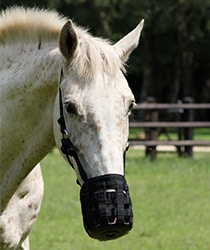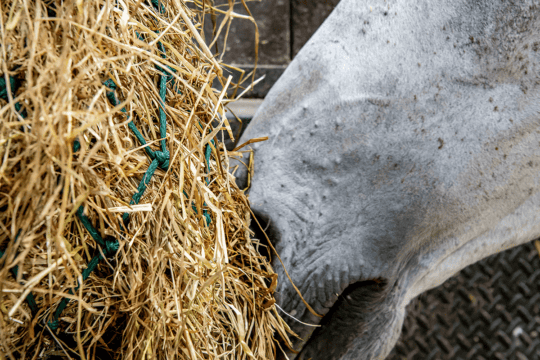Cushing’s disease (also known as Pituitary Pars Intermedia Dysfunction, or PPID) occurs when a tumour called a pituitary adenoma develops in the pituitary gland.

As this tumour slowly grows, it sends signals to the rest of the body to secrete excessive hormones. It is most common in older horses and ponies.
Clinical signs of Cushing’s:
• A long, curly coat that does not shed
• Laminitis
• Abnormal fat deposits on the body
• Weight loss
• Drinking and urinating frequently
• Increased susceptibility to infection
• Reproductive problems
Treatment and prevention of Cushing’s
• A drug that comes in the form of a small tablet, which is given every day.
• A low carbohydrate diet.
• Clipping out ponies who have thick, curly coats as they can overheat.
Treatment is based on managing the disease, and medication is likely to be needed for the rest of the horse’s life.
Equine Metabolic Syndrome is a hormonal disorder, which causes insulin resistance. Ponies with EMS don’t respond to insulin as they should, so glucose remains in the bloodstream. It is very similar to Type II Diabetes in Humans.
Any pony can be affected by EMS, but it occurs much more frequently in overweight ponies.
Signs of EMS:
• Laminitis (The reason why EMS causes laminitis is the focus of much research)
• Abnormal fat deposits on the body, particularly above the eyes, in the crest and neck, behind the shoulder and at the tail head.
• Obesity, and difficulty in weight loss
• Lethargy
• Excessive drinking and urination
Diagnosis
EMS is diagnosed by clinical signs and blood tests. Samples are taken for insulin and glucose as ponies with EMS will show high levels of both. However, in some cases of EMS, blood test can show normal results. This would then require a pony to have more extensive testing, where their response to glucose is measured.
Treatment and prevention of EMS
• Reduce the pony’s calorie intake
• Moderate the mount of grass and hay a pony receives and fit your pony with a grazing muzzle if he lives out to limit his grass intake.
• Don’t feed grains, carrots, apples or other feeds which are high in sugar content.
• Increase exercise levels.
Your Comments
One thought on “What is Cushing’s and Equine Metabolic Syndrome (EMS)?”
Leave a Reply
You must be logged in to post a comment.
















I have read all the information but still not sure . my welsh d 15 years old always been a big ish and she had problem with her feet after a blacksmith cut feet back to much she was lame for 4 weeks vet came back with ems
She lossed weight and you could see her rips so i put her on happy hoof and fibre mix all low in sugar and starch she is not big lossing weight and any noise or any thing just walking by her field she runs away and always frightened and bit moody strong to handle which is not her so sad as her was broken two years ago but not sure she would cope with been ridden , hope you can help as your in formation and advice is always good